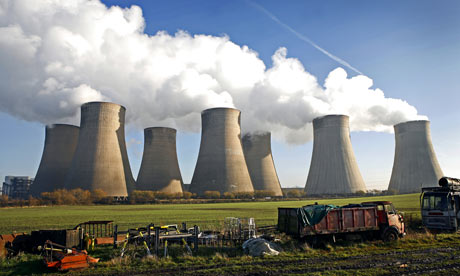(This post originally appeared on EDF Voices)
The Environmental Protection Agency announced the nation’s first-ever carbon pollution standards for new power plants this morning—a major victory in the fight against climate change. Right now, there are no limits at all on carbon pollution from power plants, the single largest source of this pollution in the United States.
These standards are a necessary, common sense step that will ensure cleaner power generation that helps protect our children from dangerous smog and our communities from extreme weather. They will also drive innovation, so that America can continue to lead the world in the race to develop cleaner, safer power technologies.
- American Academy of Pediatrics journal publication:
Anticipated direct health consequences of climate change include injury and death from extreme weather events and natural disasters, increase in climate-sensitive infectious disease, increases in air pollution-related illness, and more heat related, potentially fatal, illness. Within all of these categories, children have increased vulnerability compared with other groups.
- American Lung Association website:
Scientists warn that the buildup of greenhouse gases and the climate changes caused by it will create conditions, including warmer temperatures, which will increase the risk of unhealthful ambient ozone levels. Higher temperatures can enhance the conditions for ozone formation. Even with the steps that are in place to reduce ozone, evidence warns that changes in climate are likely to increase ozone levels in the future in large parts of the United States.
- American Medical Association news/opinion piece:
If physicians want evidence of climate change, they may well find it in their own offices. Patients are presenting with illnesses that once happened only in warmer areas. Chronic conditions are becoming aggravated by more frequent and extended heat waves. Allergy and asthma seasons are getting longer. . . . Rising air and water temperatures and rising ocean levels since the late 1960s have increased the severity of weather, including hurricanes and droughts, and the production of ground-level ozone. That means more asthma and respiratory illnesses, more heat stroke and exhaustion, and exacerbation of chronic conditions such as heart disease.
Cost-effective, low-carbon energy solutions are already helping spur the economy, create good jobs and reduce harmful pollution in red and blue states across the country. Industries are recognizing that these smart power solutions are not only good for people and the environment, but also very good for business.
Many major power companies have recognized the need to address carbon. When these standards were initially proposed, the CEO of PSEG, Ralph Izzo, said, “[t]he Agency’s action establishes a logical and modest standard for new electric power plants and provides the industry with much needed regulatory certainty. The EPA provides a framework for the industry to confront this problem in a cost effective manner.” And the CEO of American Electric Power, Nick Akins, said in June that the new Climate Action Plan can be carried out “without a major impact to customers or the economy.”
Wind topped all new power deployed in 2012, with especially strong growth in Kansas, Texas, Iowa, Colorado, Illinois, Minnesota and Oklahoma. So-called “microgrids”—local generation networks that can run independent of the grid—are unlocking on-site clean power that expands clean energy choices for communities and consumers. And new financing models are driving more efficient use of energy at scale, cutting pollution while saving businesses and families money.
We know we must act now.
The costs of climate inaction are hitting home across the country as extreme weather events batter our communities. From the recent heartbreaking severe floods in Colorado to last year’s devastation from Superstorm Sandy in the Northeast, from crippling drought to terrible wildfires in the West, extreme weather is here and made worse by rising temperatures. The two million Americans who supported the EPA’s initial proposal last year know that doing nothing about climate change is not free. We are paying costs now and will inflict even greater costs on our children and future generations if we do not begin taking aggressive action to reduce carbon emissions.
As Energy Secretary Ernest Moniz said earlier this week, “every ton we emit you can check it off against our children and grandchildren.” The naysayers, as always, are out in force and will do everything they can to derail action on climate. Please join Americans across our nation and lend your voice of support during this crucial time. Together with health and environmental groups, businesses, parents and states – red and blue – we can work together to meet this challenge.










